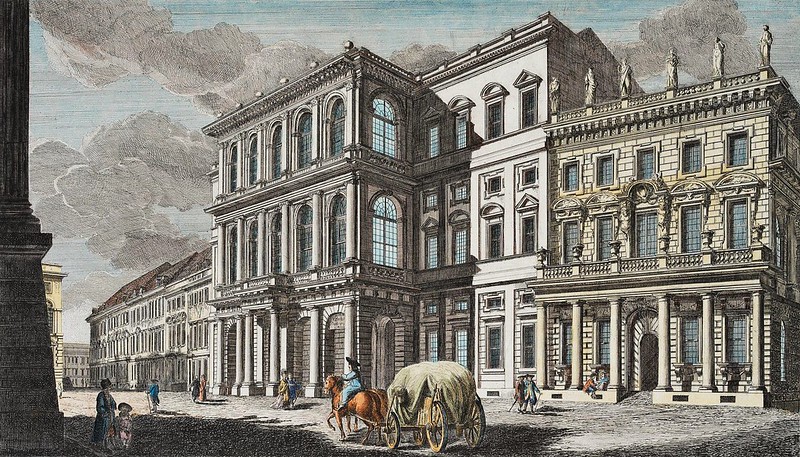Johann Joachim Quantz (1697-1773) - Concerto (e-moll) per il Flauto (1760), QV 5:120
Performers: Karlheinz Zöller (1928-2005, flute); Berliner Philharmoniker; Hans Von Benda (1888-1972, conductor)
---
German flautist, composer, writer on music and flute maker. The son of a
blacksmith, he began his musical training in 1708 with his uncle,
Justus Quantz, a town musician in Merseburg. After Justus’s death three
months later, Quantz continued his apprenticeship with his uncle’s
successor and son-in-law, J.A. Fleischhack, whom he served as a
journeyman after the completion of the apprenticeship in 1713. During
his apprenticeship, Quantz achieved proficiency on most of the principal
string instruments, the oboe and the trumpet. Taking advantage of a
period of mourning for the reigning duke’s brother in 1714, he visited
Pirna where he came across some of Vivaldi’s violin concertos, which
were to have a decisive influence on his artistic development. In March
1716 he accepted an invitation by Gottfried Heyne to join the Dresden
town band. Quantz spent part of 1717 in Vienna studying counterpoint
with J.D. Zelenka. In 1718 he became oboist in the Polish chapel of
Augustus II, Elector of Saxony and King of Poland, accompanying him on
official visits to Warsaw but remaining in Dresden for substantial
periods. Because Quantz found little opportunity for advancement as an
oboist, he turned to the transverse flute in 1719, studying briefly with
P.G. Buffardin. However, he credited J.G. Pisendel, the leading
violinist and representative of the ‘mixed taste’ (French and Italian),
with the greatest influence on his development as a performer and
composer. His interest in composition, particularly in works for the
flute, continued to grow, stimulated by a wide range of Italian and
French works then performed in Dresden. In the Saxon court’s repertory,
however, influenced by opera seria and the instrumental compositions of
Corelli, Torelli and Vivaldi, the Italian musical style gradually
superseded the French.
Between 1724 and 1727 Quantz completed his training with a period of
study in Italy and shorter stays in France and England. He studied
counterpoint with Francesco Gasparini in Rome, impressed Alessandro
Scarlatti favourably and met, among many others, the future Dresden
Kapellmeister J.A. Hasse, who was then studying with Scarlatti. From
August 1726 to March 1727 he visited Paris. While in Paris he for the
first time had a second key added to his flutes to improve their
intonation. After a ten-week stay in England, where he met Handel,
Quantz returned to Dresden in July 1727. The three-year tour established
his reputation outside Germany, paving the way for the future
international dissemination of his music. In March 1728 he was promoted
to a member of the regular Dresden court chapel, where he was no longer
required to double on the oboe. With this promotion he had finally won
recognition as one of the outstanding performers in Dresden. In May 1728
Quantz, Pisendel, Buffardin and others accompanied Augustus II on a
state visit to Berlin. Quantz made a particularly deep impression on
Prince Frederick, and returned to the Prussian court twice a year to
teach him the flute. When Augustus II died in 1733, Quantz was not
allowed to transfer to Berlin. When Frederick became King of Prussia in
1740 he could offer Quantz 2000 thalers a year, exemption from duties in
the opera orchestra and an agreement to take orders only from him. In
December 1741 Quantz moved to Berlin, and for the remainder of his
career his duties centred on the supervision of the king’s private
evening concerts, for which he wrote new works and at which he alone had
the privilege of criticizing Frederick’s playing. Quantz remained at
Frederick's court at Potsdam until his death in 1773.

Cap comentari:
Publica un comentari a l'entrada